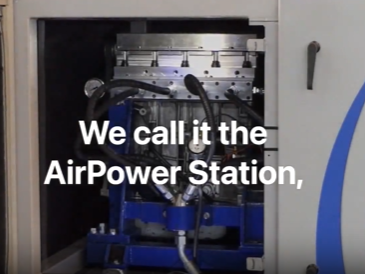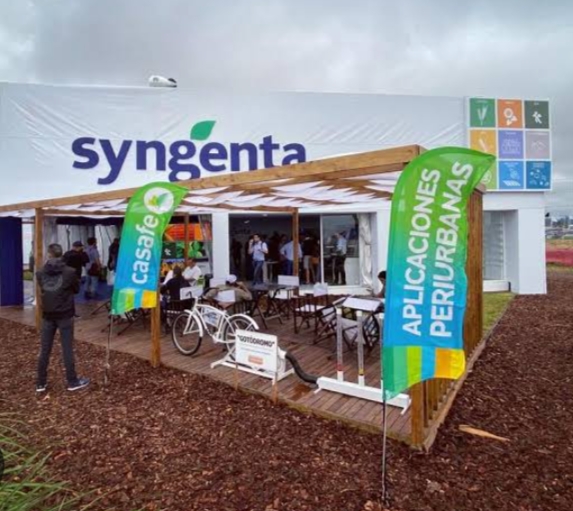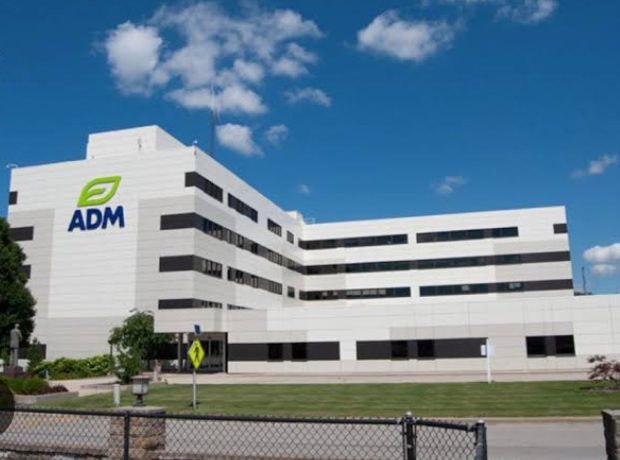Introduction Modern Agriculture Companies
The modern agriculture sector is marked by the prominence of innovative companies that play pivotal roles in shaping the industry’s landscape.
Among the top players, Monsanto, now a part of Bayer, stands out for its contributions to genetically modified crops and agricultural biotechnology. Syngenta follows closely, demonstrating excellence in crop protection and seeds, while Cargill, a global agricultural and food conglomerate, showcases its diversified influence across the supply chain.
John Deere, a renowned name in agriculture machinery, has consistently secured a spot among the top 10, emphasizing technological advancements in farming equipment. DuPont Pioneer, now integrated into Corteva Agriscience, has made significant strides in sustainable agriculture practices. BASF and Bayer CropScience contribute to the list with their focus on agrochemicals and crop solutions. DowDuPont, which has since split into Dow Inc. and DuPont de Nemours, has left a lasting impact on the industry.
Completing the lineup are Archer Daniels Midland (ADM), a key player in processing and trading agricultural commodities, and CNH Industrial, known for manufacturing agricultural machinery. Together, these top 10 modern agriculture companies exemplify a diverse range of expertise and innovations that drive the agricultural sector towards efficiency, sustainability, and technological excellence.
KPI for Top 10 Modern Agriculture Companies
Key Performance Indicators (KPIs) for the top 10 modern agriculture companies can vary based on their specific business strategies, goals, and focus areas. However, here are some general KPIs that may be relevant for assessing the performance of these companies in the modern agriculture sector:
Here is KPI for Top 10 Modern Agriculture Companies:
1. Revenue and Profitability:
– Total revenue and net profit to gauge overall financial performance.
2. Market Share:
– Percentage of market share in key product categories and regions.
3. Research and Development (R&D) Investment:
– Percentage of revenue allocated to R&D for innovation in seeds, crop protection, and technology.
4. Product Portfolio Performance:
– Sales growth and market penetration for key products, such as seeds, crop protection solutions, and agricultural machinery.
5. Sustainability Metrics:
– Environmental impact assessments, adoption of sustainable farming practices, and reduction in the use of agrochemicals.
6. Digital Agriculture Adoption:
– Number of farmers adopting digital farming technologies and the growth of digital farming services.
7. Customer Satisfaction:
– Customer feedback and satisfaction scores to assess the effectiveness of products and services.
8. Supply Chain Efficiency:
– Inventory turnover rates, on-time delivery metrics, and supply chain cost-effectiveness.
9. Employee Productivity and Satisfaction:
– Employee engagement, satisfaction, and productivity metrics.
10. Community Impact:
– Social responsibility and community impact, including initiatives related to rural development, education, and support for local communities.
These KPIs provide a holistic view of a company’s performance, covering financial health, innovation, sustainability, customer relations, and overall contributions to the agricultural industry. The specific metrics may vary based on the company’s focus and industry trends. Companies may also track additional KPIs that align with their unique goals and objectives.
The top 10 modern agriculture companies
The top 10 modern agriculture companies represent a dynamic and influential force in shaping the agricultural landscape.
Here is the list of Top 10 Modern Agriculture Companies
1. Monsanto (now part of Bayer)
2. Syngenta
3. Cargill
4. John Deere
5. DuPont Pioneer (now part of Corteva Agriscience)
6. BASF
7. Bayer CropScience
8. DowDuPont (now Dow Inc. and DuPont de Nemours)
9. Archer Daniels Midland (ADM)
10. CNH Industrial
From industry giants like Monsanto, contributing to genetic advancements, to Syngenta’s expertise in crop protection, these companies collectively drive innovation and sustainability. Cargill, with its global footprint in agriculture and food, and John Deere, a leader in advanced farming machinery, highlight the diverse expertise within the sector. DuPont Pioneer’s integration into Corteva Agriscience underscores the emphasis on sustainable agricultural practices, while BASF and Bayer CropScience contribute with cutting-edge agrochemicals and crop solutions.
The legacy of DowDuPont, now split into Dow Inc. and DuPont de Nemours, continues to influence the industry, joined by Archer Daniels Midland’s prowess in processing agricultural commodities and CNH Industrial’s manufacturing excellence in agricultural machinery. Together, these companies shape the future of modern agriculture through innovation, technology, and a commitment to global food security
The top 10 modern agriculture companies: Monsanto (now part of Bayer)
One of the key players in the top 10 modern agriculture companies is Monsanto, which has become an integral part of Bayer. Monsanto, historically recognized for its pioneering work in genetically modified crops and agricultural biotechnology, now operates under the umbrella of Bayer.
This integration has strengthened Bayer’s position in the agriculture industry, allowing for a broader portfolio of products and technologies aimed at addressing the challenges faced by modern agriculture. The combined expertise of Bayer and Monsanto underscores their commitment to advancing agricultural innovation and contributing to the sustainable development of the global food supply chain.
Product of Mosanto
Monsanto, now a part of Bayer, was widely known for its contributions to agricultural biotechnology and the development of genetically modified organisms (GMOs). Some of Monsanto’s notable products included:
1. Roundup: A widely used herbicide containing glyphosate, originally developed by Monsanto. This product faced controversy and legal issues due to its association with potential environmental and health concerns.
2. Roundup Ready Seeds: Genetically modified seeds designed to be resistant to the herbicide Roundup. This allowed farmers to use Roundup for weed control without harming their crops.
3. Bt Cotton: Genetically modified cotton that expresses a toxin from the bacterium Bacillus thuringiensis (Bt), providing resistance to certain pests.
4. GMO Corn and Soybeans: Monsanto developed genetically modified varieties of corn and soybeans with traits such as resistance to pests and herbicides.
The top 10 modern agriculture companies: Syngenta
Syngenta is a prominent player among the top 10 modern agriculture companies. Renowned for its expertise in crop protection and seeds, Syngenta has made significant contributions to the agricultural industry.
The company focuses on developing innovative solutions to enhance crop yields, improve resilience against pests and diseases, and promote sustainable farming practices. Syngenta’s commitment to research and development has positioned it as a key player in the global agricultural sector, addressing challenges and contributing to the advancement of modern agriculture.
Products:
Syngenta is well-known for its comprehensive range of agricultural products, focusing on crop protection and seeds. Their product portfolio includes herbicides, insecticides, fungicides, and seed varieties designed to enhance crop productivity and protect against pests and diseases. Syngenta’s seeds often incorporate advanced technologies, such as genetic traits for pest resistance and improved yields.
Market Share:
Syngenta holds a significant market share in the global agrochemical and seeds industry. The company’s market presence is especially notable in sectors like crop protection, where its products play a crucial role in ensuring crop health and productivity. The exact market share can vary by region and product category. As of my last update, Syngenta was acquired by ChemChina in 2017, and subsequently, it became part of the China National Chemical Corporation (ChemChina). Changes in ownership structures can influence market dynamics and market shares.
The top 10 modern agriculture companies: Cargill
Cargill is a significant player among the top 10 modern agriculture companies. As a global agricultural and food conglomerate, Cargill has a diverse presence across various segments of the supply chain. The company engages in the production, processing, and distribution of agricultural products, including grains, oilseeds, livestock feed, and food ingredients.
Cargill’s impact extends beyond primary production, with involvement in trading commodities, processing food products, and providing services related to agriculture. The company plays a vital role in ensuring a stable and efficient global food supply chain.
Product:
Cargill operates across a wide spectrum of products within the agriculture and food industries. Its product portfolio includes:
– Grains and Oilseeds: Cargill is involved in the production and trading of grains such as corn, wheat, and soybeans, as well as oilseeds like soybeans and sunflower.
– Livestock Feed: The company produces and sells animal feed and nutrition products for various livestock, contributing to efficient and healthy animal farming.
– Food Ingredients: Cargill is a major supplier of food ingredients, offering a range of products like sweeteners, starches, and other additives to the food industry.
– Trading and Processing: Cargill is a key player in commodity trading, processing agricultural commodities like cocoa, coffee, and cotton.
Market Share:
Cargill holds a substantial market share in the global agricultural and food industries due to its diversified operations. The company’s influence spans from the production and processing of agricultural commodities to the provision of food ingredients and services. Cargill’s market share can vary across different sectors, including grains and oilseeds, livestock feed, and food ingredients.
The top 10 modern agriculture companies: John Deere
John Deere is a prominent player among the top 10 modern agriculture companies. Renowned for its expertise in manufacturing advanced farming machinery and equipment, John Deere has had a substantial impact on the agricultural industry. The company is particularly recognized for its innovative approach to technology in agriculture, offering a range of products such as tractors, harvesters, precision farming tools, and autonomous solutions.
John Deere’s commitment to providing farmers with cutting-edge technology and efficient equipment has solidified its position as a leader in the modern agriculture sector. The company’s influence extends globally, contributing significantly to the mechanization and technological advancement of farming practices.
Product:
John Deere is renowned for manufacturing a wide array of advanced farming machinery and equipment, catering to various aspects of modern agriculture. The company’s product portfolio includes:
– Tractors: John Deere produces a range of tractors with various power capacities and features, incorporating cutting-edge technology for efficiency and precision.
– Harvesters: The company manufactures combine harvesters and other harvesting equipment designed to enhance productivity during crop harvesting.
– Precision Farming Tools: John Deere is a pioneer in precision agriculture, offering technologies like GPS-guided systems, data analytics, and variable rate applications to optimize farming practices.
– Autonomous Solutions: Exploring the frontier of agricultural technology, John Deere has been developing autonomous and semi-autonomous machinery to increase efficiency on the farm.
Market Share:
John Deere holds a significant market share in the global agricultural machinery sector. The company’s reputation for producing reliable and technologically advanced equipment has solidified its standing in the market. The exact market share can vary by region and product category, but John Deere is consistently recognized as one of the leading providers of agricultural machinery worldwide.
The top 10 modern agriculture companies: DuPont Pioneer (now part of Corteva Agriscience)
DuPont Pioneer, now integrated into Corteva Agriscience, has been a key player among the top modern agriculture companies. Recognized for its contributions to seed technology and agricultural innovation, DuPont Pioneer brought advanced seed varieties to the market, focusing on improved yields and resilience. As part of Corteva Agriscience, the company continues to play a significant role in shaping the future of agriculture.
Product:
Corteva Agriscience, which includes the legacy of DuPont Pioneer, offers a diverse range of agricultural products, emphasizing seeds and crop protection solutions. The product portfolio includes:
– Seeds: Corteva is known for its advanced seed technologies, providing farmers with a variety of seeds tailored for improved yields, pest resistance, and other desirable traits.
– Crop Protection: The company develops and offers a range of crop protection solutions, including herbicides, insecticides, and fungicides, to address challenges in pest management and disease control.
– Digital Agriculture: Corteva has also ventured into digital agriculture, providing farmers with tools and technologies for precision farming, data analytics, and decision-making.
Market Share:
Corteva Agriscience holds a substantial market share in the global agricultural industry, particularly in the seeds and crop protection sectors. The company’s legacy, including DuPont Pioneer, has contributed to its influence in the market. The exact market share can vary by region and product category.
The top 10 modern agriculture companies: BASF
BASF is a significant player among the top 10 modern agriculture companies. Known for its contributions to the agricultural industry, BASF operates in various segments, focusing on the development and production of agrochemicals and crop solutions. The company plays a crucial role in providing farmers with innovative products to enhance crop yields, protect against pests and diseases, and promote sustainable farming practices.
Product:
BASF is recognized for its extensive portfolio of agrochemicals and crop solutions. The company’s product offerings include:
– Agrochemicals: BASF develops herbicides, insecticides, and fungicides designed to address various challenges in crop protection, supporting farmers in managing pests, diseases, and weeds effectively.
– Seeds and Traits: BASF has ventured into seed technology, working on developing improved seed varieties and traits to enhance crop performance and resilience.
– Biological Solutions: Emphasizing sustainable agriculture, BASF offers biological solutions that harness the power of naturally occurring organisms to enhance plant health and protect against pests.
Market Share:
BASF holds a significant market share in the global agrochemical and crop protection industry. The company’s influence extends across various regions, contributing to its standing as one of the key players in modern agriculture. The exact market share can vary by product category and geographic region.
The top 10 modern agriculture companies: Bayer CropScience
Bayer CropScience is a significant player among the top 10 modern agriculture companies. Renowned for its contributions to agrochemicals, seeds, and crop protection solutions, Bayer CropScience operates within the broader framework of Bayer AG. The company focuses on developing innovative products to address challenges faced by farmers, promote sustainable agriculture, and enhance overall crop productivity.
Product:
Bayer CropScience, as part of Bayer AG, offers a comprehensive portfolio of products in the agricultural sector. The company’s product range includes:
– Crop Protection Solutions: Bayer CropScience is known for developing a variety of herbicides, insecticides, and fungicides to protect crops from pests, diseases, and weeds.
– Seeds and Traits: Bayer CropScience is involved in seed development, providing farmers with advanced seed varieties and traits designed to improve yields and enhance crop resilience.
– Digital Farming: Embracing modern agricultural technologies, Bayer CropScience has ventured into digital farming solutions, offering tools and technologies for precision agriculture, data analytics, and farm management.
Market Share:
Bayer CropScience holds a significant market share in the global agricultural industry, particularly in the areas of crop protection and seeds. The company’s influence extends globally, contributing to its standing as one of the major players in modern agriculture. The exact market share can vary by product category and geographic region.
Bayer AG. Market dynamics can change, and the latest information will provide the most accurate insights into the company’s standing in the market.
The top 10 modern agriculture companies: DowDuPont (now Dow Inc. and DuPont de Nemours)
DowDuPont, now separated into Dow Inc. and DuPont de Nemours, has been a significant entity among the top 10 modern agriculture companies. As of my last update in January 2022, both Dow Inc. and DuPont de Nemours continue to contribute to the agricultural sector with their respective expertise.
Dow Inc
Product:
Dow Inc., as part of its agricultural solutions division, offers a range of products for modern agriculture. This includes:
– Crop Protection Solutions: Dow provides herbicides, fungicides, and insecticides to help farmers protect their crops and improve yields.
– Seeds and Traits: Dow is involved in seed technologies, working on developing seeds with improved traits to enhance crop performance.
Market Share:
Dow Inc. holds a significant market share in the global agricultural industry, particularly in the areas of crop protection and seeds. The company’s influence extends globally, contributing to its standing as a major player in modern agriculture.
DuPont de Nemours
Product:
DuPont de Nemours, with a focus on agriculture, provides products that include:
– Seed Technologies: DuPont works on developing advanced seed varieties and traits to improve crop yields and resilience.
– Crop Protection: The company offers a range of solutions to protect crops from pests, diseases, and weeds.
Market Share:
DuPont de Nemours holds a considerable market share in the global agricultural industry, especially in the segments of seeds and crop protection. The exact market share can vary by product category and geographic region.
The top 10 modern agriculture companies: Archer Daniels Midland (ADM)
Archer Daniels Midland (ADM) is a significant player among the top 10 modern agriculture companies. Renowned for its role in processing and trading agricultural commodities, ADM operates globally, contributing to various aspects of the agricultural supply chain. The company plays a crucial role in the transformation of raw agricultural products into an array of food, feed, and industrial products.
Product:
Archer Daniels Midland (ADM) operates across diverse segments of the agricultural supply chain, providing a wide range of products and services:
– Processing and Manufacturing: ADM is involved in the processing and manufacturing of agricultural commodities, producing items such as oils, sweeteners, and proteins.
– Trading and Merchandising: The company engages in the trading and merchandising of agricultural commodities, connecting producers and consumers around the world.
– Ingredients for Food and Feed: ADM produces ingredients used in the food and feed industries, including additives, flavors, and nutritional products.
Market Share:
ADM holds a significant market share in the global agribusiness sector, particularly in the processing and trading of agricultural commodities. The company’s influence spans various regions and product categories within the agricultural supply chain.
The top 10 modern agriculture companies: CNH Industrial
CNH Industrial is a prominent player among the top 10 modern agriculture companies. Renowned for its manufacturing excellence in agricultural machinery, CNH Industrial operates globally, providing a diverse range of equipment and solutions for modern farming practices. The company is well-known for its brands, including Case IH, New Holland Agriculture, and STEYR, offering a variety of tractors, combines, and other agricultural machinery.
Product:
CNH Industrial, specializing in agricultural machinery, offers a comprehensive range of products designed to meet the needs of modern farming:
– Tractors: CNH Industrial manufactures a variety of tractors with different power capacities and features to suit various agricultural applications.
– Combines and Harvesters: The company provides combines and harvesters for efficient crop harvesting, contributing to increased productivity.
– Planting and Seeding Equipment: CNH Industrial offers equipment for planting and seeding, supporting precision farming practices.
– Other Agricultural Machinery: The company produces a diverse range of agricultural machinery, including hay and forage equipment, sprayers, and material handling equipment.
Market Share:
CNH Industrial holds a significant market share in the global agricultural machinery sector. The company’s influence extends across various regions, contributing to its standing as one of the major players in modern agriculture. The exact market share can vary by product category and geographic region.
Conclusion The top 10 modern agriculture companies
The top 10 modern agriculture companies represent a diverse and dynamic industry that plays a pivotal role in feeding the world’s growing population.
Companies such as Bayer CropScience, Dow Inc., DuPont de Nemours, CNH Industrial, and others contribute to the advancement of agriculture through innovations in seeds, crop protection, machinery, and digital farming technologies. Their comprehensive product portfolios and substantial market shares underscore their influence in shaping the future of sustainable and efficient farming practices.
As the agricultural landscape evolves, these companies continue to lead the way in providing solutions that address the challenges faced by farmers and contribute to the global food supply chain. It’s essential to stay informed with the latest developments and insights from these companies to understand their ongoing impact on the modern agricultural sector.
https://www.exaputra.com/2023/12/top-10-modern-agriculture-companies.html
Renewable Energy
Before Trump, “Contempt of Court” Used to Be a Big Deal
 Most Americans, me included, are puzzled as to how the Trump administration can openly thumb its nose to the findings of our courts. Until recently, behavior like this would have wound you up in jail.
Most Americans, me included, are puzzled as to how the Trump administration can openly thumb its nose to the findings of our courts. Until recently, behavior like this would have wound you up in jail.
Renewable Energy
How Households Saved $1,200 with VEU & Air-Con Upgrade?
Renewable Energy
Air Power
 About 20 years ago, a friend asked me if I was aware that cars could run on air. I asked, delicately, what she meant, and she explained that cars can run on compressed air.
About 20 years ago, a friend asked me if I was aware that cars could run on air. I asked, delicately, what she meant, and she explained that cars can run on compressed air.
“Ah,” I replied. “Of course they can. But where does the energy come from that compresses the air?” End of conversation.
Now, it’s back. Now there are enormous swaths of the population who know so little about middle school science that they believe we can put cars on the road, in an ocean of air, and extract energy out of that air to power our automobiles.
If you’re among these morons and want to invest with some heavy-duty fraud/charlatans, here’s your opportunity. They say that it’s “self-sustaining and needs no fuel.” If that makes sense to you, be my guest.
-
Climate Change4 months ago
Guest post: Why China is still building new coal – and when it might stop
-
Greenhouse Gases4 months ago
Guest post: Why China is still building new coal – and when it might stop
-
Climate Change2 years ago
Spanish-language misinformation on renewable energy spreads online, report shows
-

 Greenhouse Gases2 years ago
Greenhouse Gases2 years ago嘉宾来稿:满足中国增长的用电需求 光伏加储能“比新建煤电更实惠”
-
Climate Change Videos2 years ago
The toxic gas flares fuelling Nigeria’s climate change – BBC News
-

 Climate Change2 years ago
Climate Change2 years ago嘉宾来稿:满足中国增长的用电需求 光伏加储能“比新建煤电更实惠”
-

 Carbon Footprint2 years ago
Carbon Footprint2 years agoUS SEC’s Climate Disclosure Rules Spur Renewed Interest in Carbon Credits
-
Renewable Energy5 months ago
US Grid Strain, Possible Allete Sale





























